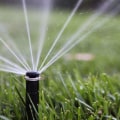Rain sensors play a critical role in maintaining an efficient and eco-friendly lawn sprinkler system. These devices prevent overwatering by detecting rainfall and temporarily shutting off the irrigation system. Proper adjustment of rain sensors ensures that your lawn receives adequate moisture without wasting water or causing potential damage to the landscape. Whether you’re a homeowner or a professional landscaper, understanding how to calibrate these sensors is essential for maintaining a healthy, well-watered lawn.
Step One: Understanding How Rain Sensors Work
Before making adjustments, it’s important to understand the basic functionality of rain sensors. These devices typically consist of moisture-absorbing discs or electronic sensors that detect rainfall and send a signal to the sprinkler controller to pause operation. Some advanced models allow for customization, such as setting thresholds for rainfall accumulation before the system shuts off. Familiarizing yourself with the specific model of your rain sensor will help you adjust it effectively.
Step Two: Choosing the Right Placement
Proper placement of the rain sensor is critical for its accuracy. Install the sensor in an open area where it can receive direct rainfall without obstruction from trees, buildings, or other structures. Avoid placing the sensor in areas prone to excessive shade or wind, as these factors can interfere with its performance. It’s also essential to position the sensor high enough to prevent damage from landscaping equipment or pets.
Step Three: Adjusting Sensitivity Settings
Most rain sensors allow users to adjust their sensitivity to rainfall. This setting determines how much rain must fall before the system shuts off. To adjust the sensitivity, locate the adjustment dial or screw on the sensor, usually labeled with increments representing different rainfall levels. Turn the dial to increase or decrease the amount of rainfall required to trigger the sensor. For instance, setting the sensor to 1/4 inch of rain may be ideal for areas with frequent light showers, while 1/2 inch might be better for regions with heavier rainfall.
Step Four: Testing and Fine-Tuning
After adjusting the sensitivity, it’s important to test the rain sensor to ensure it functions properly. Simulate rainfall by pouring water over the sensor or using a hose to mimic natural rain. Observe how the sprinkler system responds and make further adjustments if necessary. Repeat this process until the system shuts off consistently at the desired rainfall threshold. If the sensor is not responding as expected, inspect it for dirt, debris, or damage, and clean or replace it as needed.
Step Five: Maintaining the Rain Sensor
Regular maintenance is crucial to ensure the long-term effectiveness of your rain sensor. Check the device periodically for wear and tear, clean it to remove any dirt or debris, and test its functionality during routine sprinkler maintenance. If the sensor shows signs of significant damage or malfunctions, consider replacing it with a newer model. Additionally, if your property has recently undergone major changes, such as landscaping updates, verify that the sensor’s placement remains optimal and unobstructed.
Conclusion: Maximizing Efficiency with Proper Rain Sensor Adjustments
Properly adjusting rain sensors on your lawn sprinkler system is a straightforward yet vital task for conserving water and maintaining a lush landscape. By understanding how these devices work, placing them correctly, fine-tuning their sensitivity, and performing regular maintenance, you can ensure they operate efficiently. In situations where other property modifications, such as work by roofing contractors, might affect the sensor’s performance, re-evaluating its setup is crucial. Taking these steps not only helps save water but also contributes to a healthier, more sustainable outdoor environment. Whether you’re a DIY enthusiast or a professional landscaper, mastering rain sensor adjustments is a valuable skill that benefits both the environment and your wallet.






